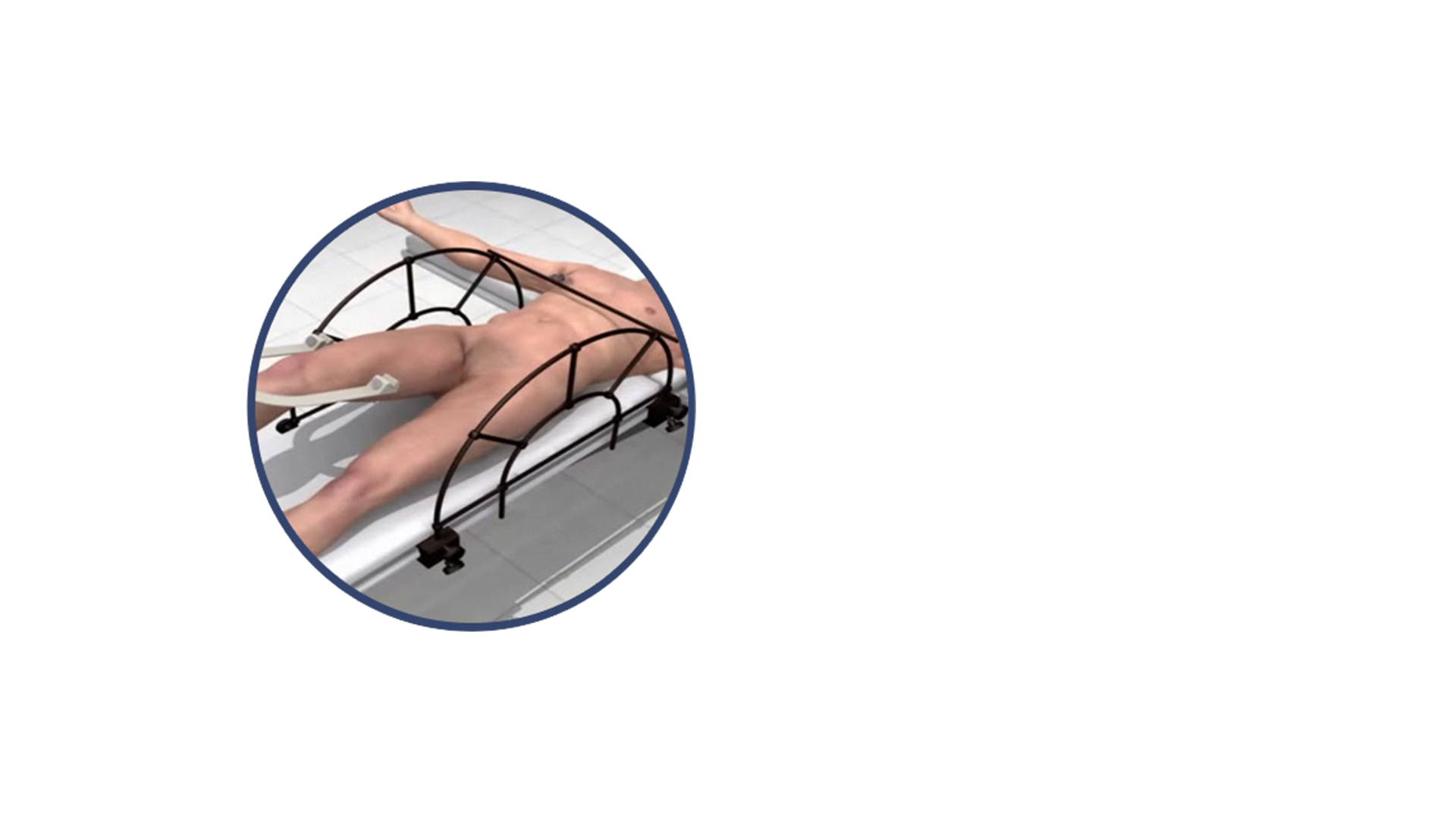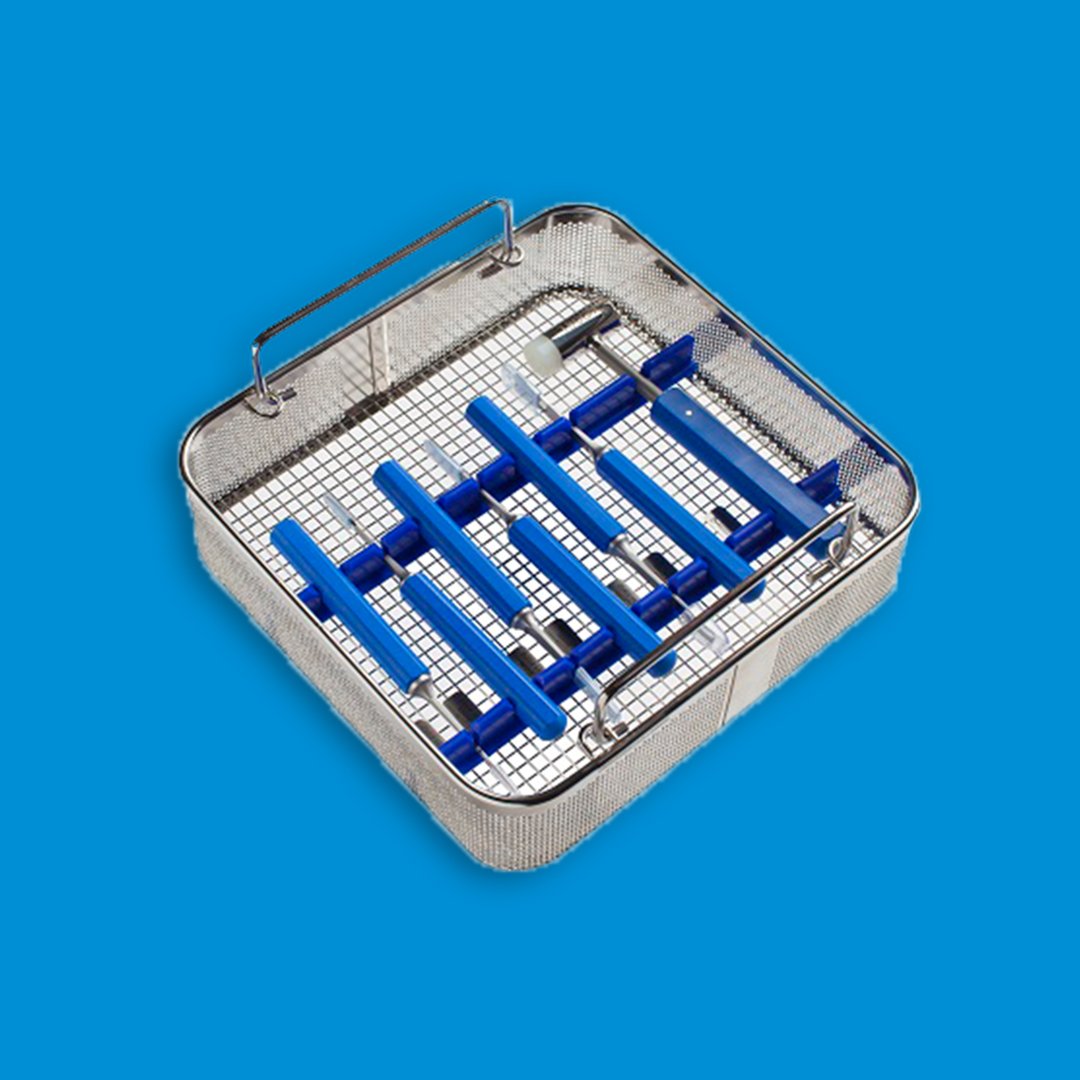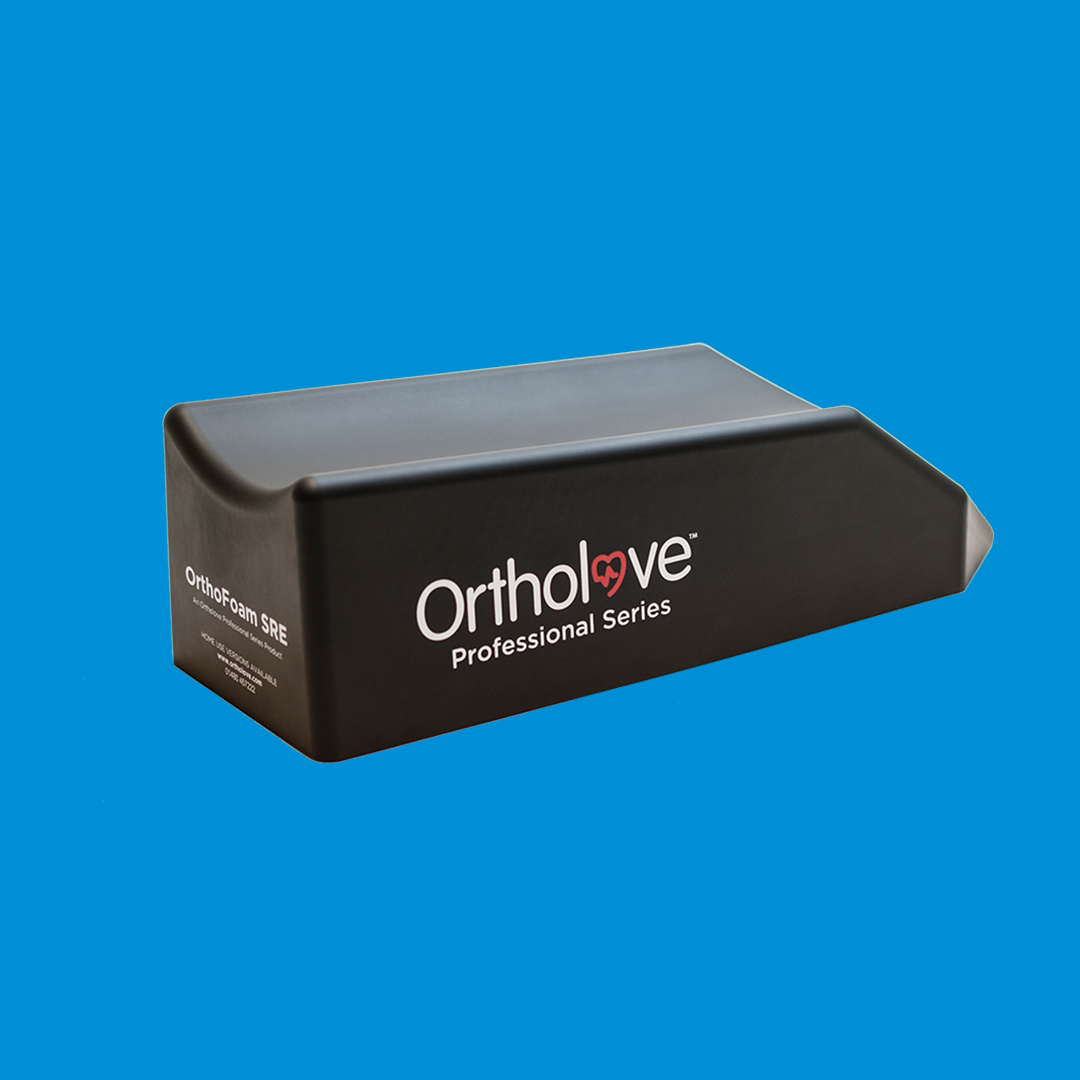

The Starr Frame® System
Key Features
- Circular design to allow for C-arm positioning
- One-piece design ensures strength and stability
- High strength, radiolucent materials
- Accommodates a range of anatomy
- Allows ease of access for screw placement
The Starr Frame® System
The Starr Frame® and Reinert Reduction™ Instruments are designed to assist with closed reduction of markedly displaced pelvic ring and acetabular fractures. Pelvic fractures are notoriously difficult to reduce due to the bones’ proximity to organs and major blood vessels. Displacement of the pelvic ring would also traditionally need an assistant to hold or pull the bones during surgery. This incurs a greater level of risk while requiring the use of an assistant.
Starr Frame® Kit
The frame system consists of components that fix together to create a rigid ‘box’ around the patient. The Starr Frame System contains the following:
- 2 Frame Halves
- 4 Starr Clamps
- 3 Cross Bars
The Starr Frame® and Cross Bars are constructed of radiolucent, high strength carbon fibre composite. This material is also lightweight, corrosion resistant and possesses a low coefficient of thermal expansion (CTE).
Starr Frame Benefits
Using the frame has the following benefits:
- Facilitates reduction through the consistent application of reduction forces.
- Allows the surgeon to proceed in a step-by-step fashion for a gradual, precise correction of the deformity.
- Reduces surgical time with a practical approach for minimally invasive fracture repair.
- Virtually eliminates post-surgical wound infection and shortens patient recovery time.
- Does not interfere with fluoroscopic imaging and allows for use of a C-arm.
INTERESTED IN Starr Frame®
If you would like more information regarding The Starr Frame®
Interested in the The Starr Frame® System ?

Starr Frame LLC is a medical device company committed to providing trauma surgery services. Their products are designed to assist medical professionals in minimally invasive pelvic reduction procedures. The company aims to improve the efficiency and safety of pelvic procedures, thereby freeing up hospital assets. The Starr Frame range contains fixation devices for minimally invasive methods. This is to improve patient experience.
Frequently Asked Questions
This system stabilises one side of the pelvic ring using minimally invasive fixation. The Starr Frame can apply force in various directions to aid reduction. In the process of using the frame, the leg on the injured side of the pelvis is first placed in traction. This is done using a steel traction bow. The 500mm half pin is then used to affix the uninjured side of the pelvis to the table via bar-to-bar frame clamps. Reinforcing bars are used to connect the two frames. A 2nd, stabilizing 500mm half pin then gets placed into the LC2 corridor and attached to one of the bars.
Now that the uninjured side of the pelvic ring is secured, traction and pin placement can be used to reduce the injured side. For instance, a pin placed in the anterior inferior iliac spine can be used to control rotational deformities. The reduction is then maintained by clamping the half pin to the frame or connecting bars. More pins can be placed in the injured side to address displacement in multiple planes.
Traditionally, pelvic ring displacements would be treated with direct reduction techniques. This posterior approach exposes the sacrum and posterior ilium, allowing direct access to the fracture site. From here, reduction can be achieved with traditional techniques like internal plating. However, it has been found that patients suffering from obesity are far more likely to develop infections following open reduction and internal fixation of the pelvic ring. Furthermore, studies show that closed reduction and percutaneous parameters were slightly more effective for fixation (4 days surgery time vs 5 days).
The Starr Frame allows facilitates the use of minimally invasive pelvic fracture procedures by allowing multi-planar fluoroscopy to accurately guide reduction. The round shape of the frame was purposely chosen to let the C-arm move while providing the surgeon with patient access. The Starr Frame acts as a stabilizer and a tool for applying force. This is frees up the surgical assistant to aid with the procedure, as opposed to being assigned the role of holding and pushing/pulling.
An acetabular fracture is a type of pelvic fracture. It occurs where the socket (acetabulum) of the hip joint meets the femoral head. Typically, when trauma is experienced at this joint it is the upper femur that sustains fractures. Acetabular fractures are most commonly caused by extreme trauma, through a high energy event like an automobile accident. Practitioners might also see acetabular fractures in older patients as an insufficiency fracture. This can occur when bones are weakened due to conditions like osteoporosis.
The pelvis is essential in protecting organs like the bladder, rectum, colon, kidneys, and sex organs. This proximity means fracture and dislocation can risk causing extensive internal bleeding. Serious pelvic injuries can often break in multiple places and therefore require immediate treatment. More mild fractures can heal over several weeks without the need for surgery. However, long term complications can still arise as a result.
The pelvis houses many important organs, blood vessels and nerves, that make it tricky area to operate on. Among the potential complications are infection and blood clots. Patients can also experience the following during post-operative rehabilitation:
- Bruised bladder
- Pain around the hips and legs
- Bleeding – either vaginal or rectal
The biggest long-term risk associated with pelvic fractures is arthritis. Surgery will aim to restore the correct position of the pelvis to avoid this.

